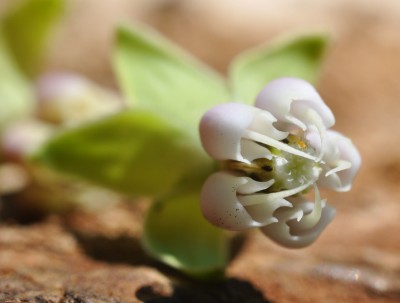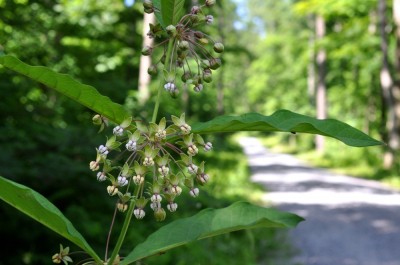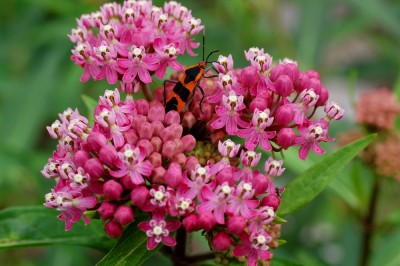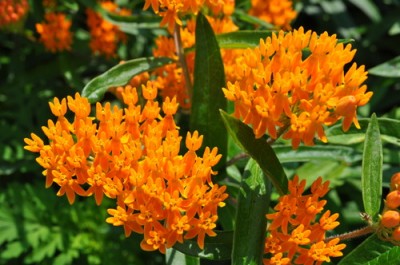The milkweed plant family encompasses a large group of plants, with almost 100 species of milkweed in the United States. There are about twelve milkweed species native to Pennsylvania, five of which can be found in the Stone Valley/Shaver’s Creek area. The species you might see around here are:
-Poke or Tall milkweed A.exaltata L.
-Swamp milkweed A.incarnata L.
-Four-leaved milkweed A. quadrifolia
-Common milkweed A.syriaca
-Butterfly-weed A.tuberosa
The two species we have in our patch are Common milkweed (Asclepias syriaca) and Butterfly-weed (Asclepias tuberosa). Milkweeds get their name from the milky-white sap contained in the leaves and stems of most plants in this family. The sap contains latex and a substance called cardiac glycoside, which is toxic to birds, mammals, and many insects. Some insects, like monarchs, have adapted to feed on milkweed. The toxin then gives these insects protection against predation.
Although milkweed plants vary in their appearance, they all have the same very distinct and unique flower shape, best appreciated when viewed up-close. The large, showy blossom many think of as the flower is actually made up of many small flowers, each equipped with a pretty amazing adaptation. The anthers (male organs) of the flowers are modified into a cup shape, creating a five pointed star pattern. The anther-cups are filled with sweet nectar to attract all sorts of pollinators. In between each of these cups is a slit containing the pollen. Unlike many flowers that disperse their pollen as a powder, milkweed packages its pollen into waxy envelopes called pollinarium that attach to the legs or hairs of pollinators visiting the flower. Look very closely at some of the butterflies and bees at your milkweed patch and you might be able to catch a glimpse of this cool pollination adaptation!
Tall Milkweed A.exaltata
Swamp milkweed A.incarnata
Four-leaved milkweed A.quadrifolia
Butterfly weed A.tuberosa
Common milkweed A.syriaca
—Jillian “Chicory” Hanelly, Plant Science Intern







Woooo hooooo